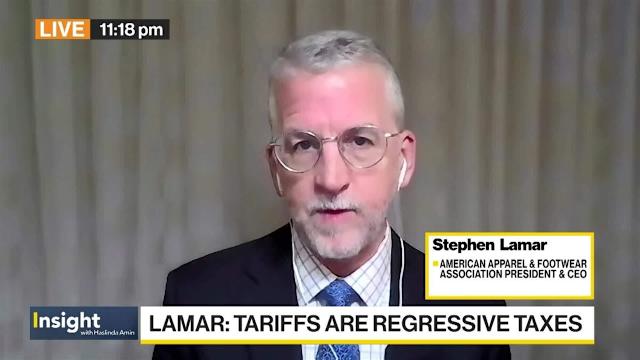
(Bloomberg) — A set of provisions tucked into President Donald Trump’s new tax-and-spending law has real estate developers and affordable housing proponents cheering – though some view it as a bittersweet victory.
Most Read from Bloomberg
-
Singer Akon’s Failed Futuristic City in Senegal Ends Up a $1 Billion Resort
-
Are Tourists Ruining Europe? How Locals Are Pushing Back
-
Can Americans Just Stop Building New Highways?
-
Why Did Cars Get So Hard to See Out Of?
-
Denver City Hall Takes a Page From NASA
The law makes significant changes to the Low-Income Housing Tax Credit, the New Markets Tax Credit and Opportunity Zones, three tax-based community development programs that housing groups and private sector investors broadly favor. The revamp is expected to spur construction of new apartment buildings and renovation of older ones, with housing analysts saying they could create as many as 1.2 million more affordable units over the next ten years than they would have if the programs had remained the same.
“We think of it as the single largest increase in affordable rental housing resources in at least 25 years,” said Peter Lawrence, the chief public policy officer at Novogradac, a consulting firm with a focus on real estate.
The new law increases some tax benefits investors can get for putting capital into affordable housing projects through the Low-Income Housing program. It also makes permanent other credits through the New Markets program, adding clarity for investors and developers seeking to make long-term plans. And it sets stricter standards for Opportunity Zones, in a move to prevent misuse and ensure that private investment dollars reach the low-income communities for which they were intended.
Together, those measures are poised to incentivize more construction of affordable units in targeted neighborhoods and, in turn, ease some of the housing price pressure that has burdened an increasingly broad swathe of Americans.
That makes the provisions something of an anomaly in a law that has become known for cuts to programs for the poor paired with giveaways to the wealthiest Americans. An analysis by economists at the University of Pennsylvania’s Wharton School says the law will leave households in low-income and some middle-income categories “worse off” overall.
“It’s the gives and the takes,” said Jeff Monge, managing partner of Monge Capital, a real estate investment advisory firm specializing in public-private partnerships. “The gives are these tax credit opportunities for investors to divert or make their investments that will eventually create prosperity for the communities that they invest in. But then you’ve got to pay for it. How are you paying for it? It ends up being a rollback on the very same communities that you’re trying to help on the other side.”
Story ContinuesAffordability Crisis
The changes come during a housing affordability crisis that experts say is the worst in recent memory. A June report by Harvard University’s Joint Center for Housing Studies found a record high number of renters — almost 23 million — are considered “cost-burdened,” meaning more than 30% of their incomes go to paying for housing and utilities. The crisis is being driven in large part by a lack of housing supply. The National Low Income Housing Coalition estimates a shortage of roughly 7 million affordable housing units across the US.
While affordable housing measures are often thought of as a priority of the Democratic Party, these measures were palatable to Republicans in part due to how they were structured: They are tax breaks rather than funding allocations, and they lay responsibility for maintaining the quality of affordable housing units on the private sector.
Under the law, investors cannot get their full tax credits or can have their value clawed back if the units they invested in fall into disrepair or are converted to market-rate units over a 15-year period. The law requires the units to remain affordable for another 15 years after that period ends, but that latter period is harder for the government to enforce.
The provision to make the New Markets credits permanent was added in the Senate, where Republicans on the Finance Committee, including Idaho Senator Mike Crapo and Montana Senator Steve Daines, shepherded them through.
“This program has been supported by both parties for a long time,” said Bob Rapoza, spokesman for the New Markets Tax Credit Coalition, a trade group representing community development funds that use the tax credit.
Together, the changes to the programs mirror legislation that housing advocates have been trying to get Congress to pass for a decade.
The new law increases the size of tax credits awarded under the Low-Income Housing Tax Credit, and decreases the requirements for public funding by states and municipalities as a proportion of the overall funding package for an affordable housing development. This makes it easier for states, cities and other government entities to fund a greater number of development projects simultaneously while developers use more private financing sources, which are often cheaper than relying on the municipal bond issues.
Meanwhile, an expanded pool of investors will be able to use the now-permanent New Markets Tax Credit. Community development organizations can tap into tax credits in the program to fund loans not only for housing development but also for new businesses, manufacturing facilities and cultural spaces.
Rapoza’s group estimates that over ten years the New Markets program alone could fund around 4,000 projects, add around 17,000 affordable housing units and create as many as 435,000 new jobs. Novogradac’s Lawrence said these projections sounded reasonable.
Opportunity Zones
The tax law also made permanent Opportunity Zones, a program that gives investors tax breaks for putting money into projects in low-income areas that was created in 2017 as part of Trump’s first tax-cut package. Opportunity Zones have drawn some criticism for failing to get private capital to the places where it is most needed and accelerating gentrification forces that push poorer people from their neighborhoods. That’s because the program originally let governors designate areas that were near low-income census tracts, but not inside of them, as qualifying for the tax breaks. And it did not require any tracking or reporting on the program’s impact.
Novogradac’s Lawrence said that the tweaks to the standards for Opportunity Zones could help make the program’s investments more meaningful and also provide evidence of its worth, helping attract additional investors. A similar dynamic could occur in the New Markets program, according to Monge.
Still, the experts noted potential roadblocks for the programs to generate the most possible benefit. Developers using the Low-Income Housing credit often rely in part on other public funding sources, including Community Development Block Grants from the Department of Housing and Urban Development. The Trump administration has sought to end that grant program.
It has also proposed cutting nearly all of the budget for a Treasury Department office, the Community Development Financial Institutions Fund, that oversees the administration of the New Markets credit.
Monge said he applauded the changes, but hoped they did not leave investors too much room to misbehave.
“We don’t have a history of investors looking at doing good and well. There’s a history of doing well,” he said.
Most Read from Bloomberg Businessweek
-
Will Trade War Make South India the Next Manufacturing Hub?
-
‘Our Goal Is to Get Their Money’: Inside a Firm Charged With Scamming Writers for Millions
-
Trump’s Cuts Are Making Federal Data Disappear
-
‘Telecom Is the New Tequila’: Behind the Celebrity Wireless Boom
-
SNAP Cuts in Big Tax Bill Will Hit a Lot of Trump Voters Too
©2025 Bloomberg L.P.

Sign up for the Yahoo Finance Morning Brief
SubscribeBy subscribing, you are agreeing to Yahoo's Terms and Privacy Policy














